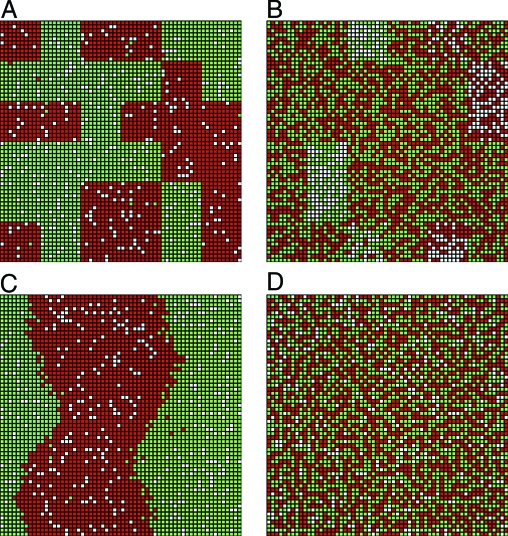Fig. 5.
Stationary configurations obtained by simulating the evolution of a city inhabited by an equal number of red and green agents whose preferences are given by the asymmetrically peaked utility function (m = 0.5). The rate of vacant cells (in white) is fixed to 10%. (A and B) The city is divided into blocks of size H = 100. In accordance with the analytic model, a segregated configuration is obtained when α = 0 (A) and a more homogeneous configuration is obtained for α = 1 (B). (C and D) The utility of an agent depends on the local density of similar neighbors computed on the H = 108 nearest cells. Although of different topological nature, a segregated configuration is still obtained for α = 0 (C) and a homogeneous configuration is still obtained for α = 1 (D). In all those simulations, we take T = 0.1. The small amount of noise hence generated, although not changing the nature of the stationary states compared with the case T → 0, conveniently reduces the time of convergence of the system.

